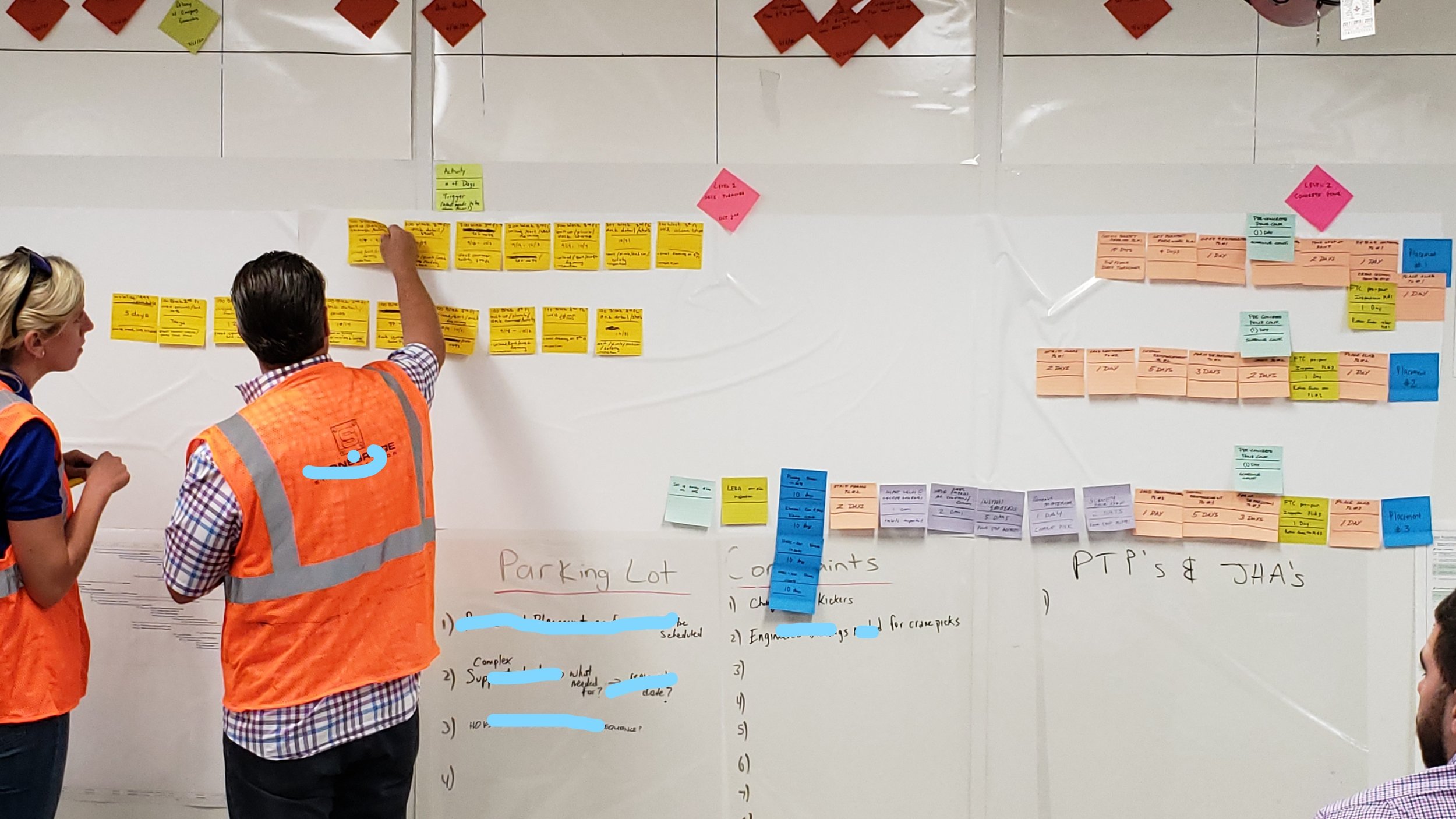When we look at a Personal Kanban, its simplicity belies its power. Visualizing our work as individuals and as teams and even as teams of teams creates trust, reliability, and understanding. When we want to co-ordinate work, these are serious prerequisites.
The image above is from a construction trailer, they are engaged in a Lean Construction exercise known as a "pull-plan". Each color is a different contractor, each diamond is a delivery or a milestone. In this case we have five different contractors whose daily work relies on the completion of daily work done by the other contractors.To spell this out, their work directly relies on people in other companies--every day.Historically, this had led to predictable delays with different companies working at different speeds for different reasons. You might recognize this from different departments in your company or different people in your family.
Our work often relies on other people who are often simply ignorant to our needs.Not surprisingly, when they are ignorant of our needs they don't give us what we need.
This makes it seem like they are "out to get us" because so often the work we receive is lacking. We attribute malice where the fact is those other busy people have different things to worry about every day and need to see their work in your context and vice-versa.The pull-plan concept takes this head-on by looking at the backlog of work (your options column) for the next six weeks and sees who needs to do what, when, and in what way in order for the schedule and budget to be met in a safe and quality way.
The teams meet and on each ticket list each activity (option) they need to do to get their work done, the number of days the work requires, and then the trigger that makes that work happen (sometimes this is from another contractor, sometimes this is just their work progressing).
This allows each contractor to self-report how long they would like the work to take and then compare the total production time to the schedule and figure out what can be done the meet the customer's expectations. Often, very often in fact, this is simply having the contractors discuss with how they need the space prepared for a clean hand-off.
I've noticed almost all in-office conflicts and "culture problems" end up coming back to hand-offs, which basically means they come back to an understanding of what quality work really entails. We need to ask some serious questions: Do I know how to provide you with work? Do you know how to provide product to me? Are we talking to each other or past each other? Do we really understand how our individual work leads to a quality end-product?
Very simply, the image above has professionals come together, make visual what they need and when they need it, and then find the best path to mutual success. They learn quickly the challenges the other contractors have and get to inform them of their own. This makes many of those challenges lessen or outright disappear.
Consider, in your Personal Kanban or that of your team, that there might be opportunities for these kinds of conversations. Be open, be honest, and work things out.Remember: No one creates a quality product alone.



